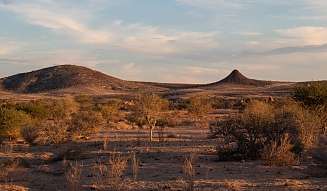Romantik Blog

The native language is cultivated
Around 2.3 million people live in the country in southern Africa. Namibia is extremely sparsely populated due to the large area of the Namib Desert (2.82 inhabitants per square kilometre, for comparison: Central Europe (NL, BE, UK, DE, IT) has 226.28), but has a great diversity of languages. With independence on 21 March 1990, English was chosen as Namibia's new official and lingua franca instead of the previous Afrikaans. The intention was to adopt a neutral position towards all ethnic groups in the country and their respective evolved languages.
Preserving the ancient languages
Namibia's language diversity is more than just the result of numerous immigrations and folk migrations over the past decades and centuries. To this day, almost every one of these groups has retained its own language. Besides the official English language, Afrikaans, German, Portuguese and 25 other African languages are spoken in Namibia. Among them is Oshiwambo, which is the language of the Aawambo and the most widely spoken Bantu language in Namibia.
Youth grow up multilingual
In Namibia, great importance is attached to the tradition and cultivation of languages that have grown over generations. Each one is also taught at school in the respective regions. Thus, every young inhabitant of Namibia grows up at least bilingual - with English as the language of communication and the official language as well as their own native language.
Post your comment
Comments
No one has commented on this page yet.
RSS feed for comments on this page RSS feed for all comments



